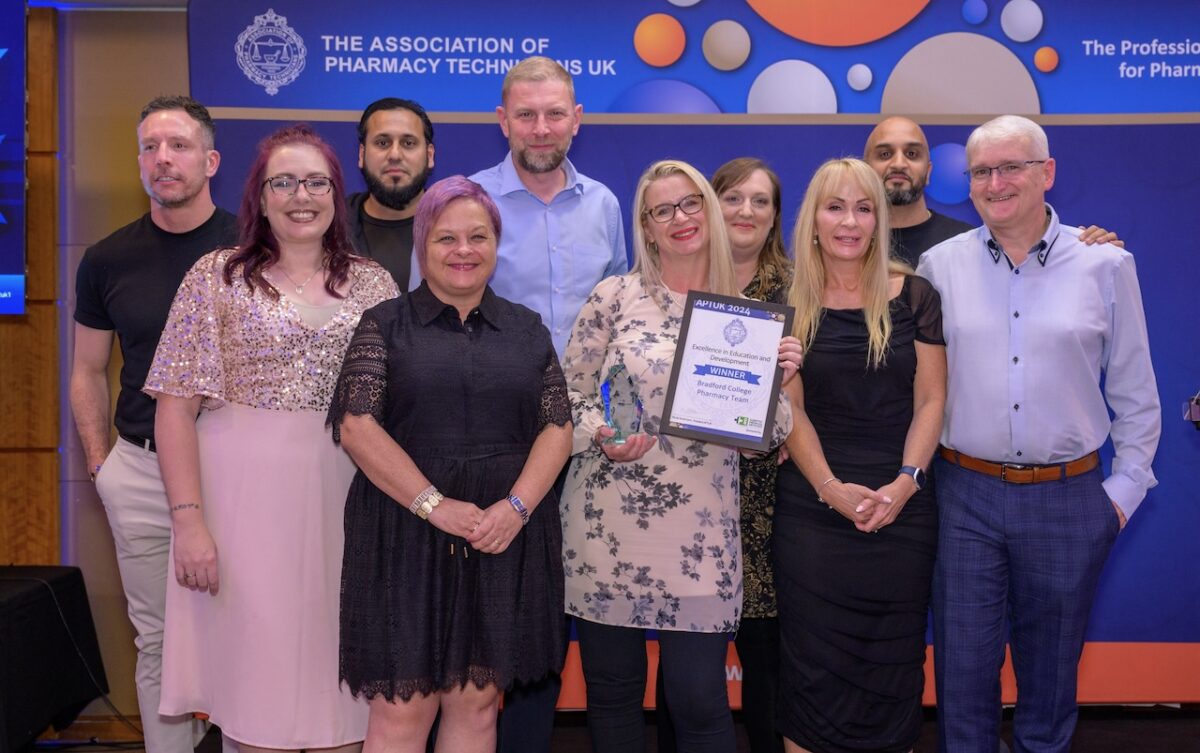Blending ‘Off the Job‘ training to meet sector needs

‘Off the Job training’ is defined by the government’s Education and Skills Funding Agency as “training, which is received by the apprentice, during the apprentice’s normal working hours, for the purpose of achieving the knowledge, skills and behaviours (KSBs)”. As the University of Derby marks National Apprenticeship Week (8-14 February), Andy Dowling, Apprenticeships Business Development Manager at the University, explores why a blend of ‘off’ and ‘on the job’ training is proving to be a winning formula for students and businesses alike.
Why is demand for degree apprenticeships growing?
Degree apprenticeships have been growing in popularity over the last few years, originally spurred on by the introduction of the Apprenticeship Levy. But they are becoming increasingly important for employers who want to be able to ‘grow their own’ talent.
Traditionally, employers have placed a strong emphasis on targeting graduate talent who have already completed a degree programme, and this continues to be a firm strategy for many businesses. However, since the introduction of degree apprenticeships, some employers have made the decision to target A Level students who have been predicted high grades with a view to starting their career journey with the company much sooner.
Why are they attractive to students and employers?
Well-designed, practical higher and degree apprenticeship programmes are developed in conjunction with employers. It is done holistically, not as an academic programme on one side, with some learning of skills in the workplace on the other.
The workplace learning – ‘on the job’ – and the classroom or online learning – ‘off the job’ (OTJ)– must be symbiotic. They should feed from each other and there should be many links between the two. In this way, apprentices become accustomed to undertaking learning activities that link their workplace to theoretical principles and producing evidence to support their learning, which can be uploaded and referenced within their e-portfolio and module assessments.
The blend of OTJ training includes some face-to-face sessions and some online sessions, with extensive digital activities that link the in-person elements with the ‘on the job’ learning, and also plans the achievement of the KSBs of the apprenticeship standard within this.
It offers a degree of flexibility around the challenges of work and home, which are currently increased by the coronavirus pandemic, but retains the cohort contact and opportunities to work in a group.
Blending OTJ training is an attractive proposition for employers. The reduction of face-to-face teaching means less time out of the business and in-person training can be delivered at the employer’s premises in a closed cohort.
OTJ training can range from at-desk work, shadowing a member of staff, visiting an industry conference or internal and external training programmes, team building, conducting research, or attending classes and lectures at the University or online.
What apprenticeships can you study or deliver?
At Derby, we have been delivering higher and degree apprenticeships since 2013. Initially, the majority of our delivery was through existing higher apprenticeship frameworks for minerals technology and healthcare assistants, but we then started to develop degree apprenticeships with the move from frameworks to standards.
Apprenticeship standards are more ‘job role’ related and result in the apprentice learning about and evidencing their KSB competencies to be successful in that job role. The apprenticeship standard is always assessed by an independent End Point Assessment Organisation (EPAO), typically the relevant professional body in the field. The Chartered Manager Degree Apprenticeship is an approved EPAO from the Chartered Management Institute (CMI), for example.
The University has predominantly targeted local employers in Derby and Derbyshire, and Nottingham and Nottinghamshire, the D2N2 Local Enterprise Partnership area, with 94 per cent of our apprentices working in the local region.
We constantly analyse the needs of the employers in the region and have defined three sectors that we work closely with to provide apprenticeships that meet the skills agenda – Transport Equipment Manufacturing; Civils, Construction and Minerals; and Public Sector, including health and social care, local authorities and police forces.
We deliver a range of engineering, management and minerals apprenticeships, but the public sector is by far our fastest growing area.
The NHS is the largest apprenticeship levy-payer in England and we have a growing cohort of nursing apprentices. Local authorities with reduced budgets for leadership training for the development of current managers have now ring-fenced apprenticeship levy funds to develop them. We also deliver the Police Constable apprenticeship to local forces and the Teacher apprenticeship to local schools across the Midlands.
Any new apprenticeship development needs will be aligned to these sectors that we have identified. Our aim is to work with our region to identify where there are skills gaps, and, in particular, to explore soft skills apprenticeships that span across our sectors.
Are apprenticeships successful?
Marrying up 20 per cent OTJ and 80 per cent on-the-job training provides the right balance to ensure an apprentice is successful not only in their apprenticeship, but in their job role too.
The University has a 100 per cent completion rate on management apprenticeships to date, with apprentices consistently achieving high honours class in their degree qualifications and a ‘distinction’ for their apprenticeships.
Over the next few years, it will be interesting to see the first large waves of engineering degree apprentices and management apprentices to the NHS, local authorities and various large private employers and smaller SMEs completing their programmes, and to find out what career progression they have already made while learning on the job.











Responses